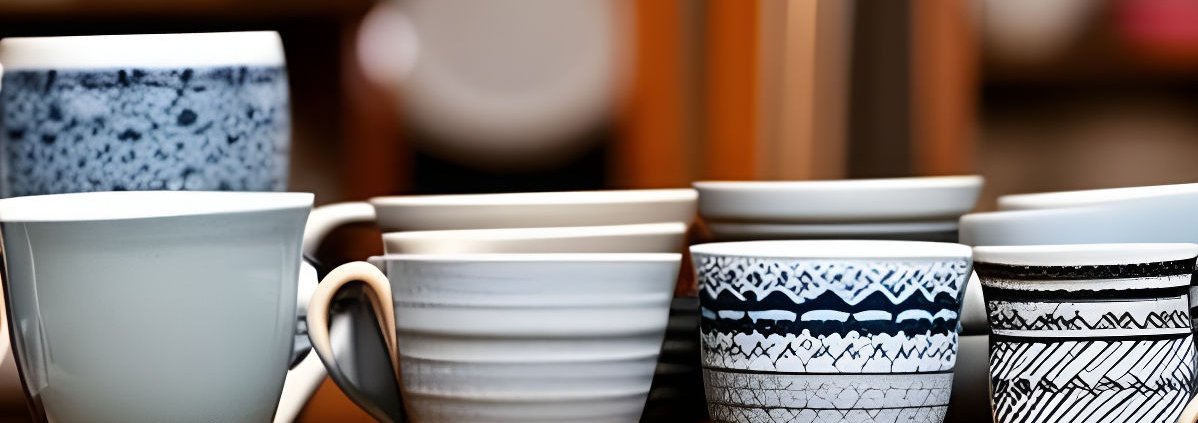Mug Mania: Exploring the Best Clay Options for Your Ceramic Cups
Summary
If you’re an avid coffee or tea drinker, you know that the perfect mug can elevate your daily beverage experience. When it comes to making mugs, choosing the right clay is crucial to ensure that your mugs are not only functional but also durable and visually appealing. In this blog post, we’ll explore the best types of clay for making mugs and what factors to consider when selecting clay for your mug-making projects.
Ideas
Stoneware Clay
Stoneware clay is a popular choice for making mugs due to its durability and versatility. It is fired at high temperatures, typically between 1200°C and 1300°C, which results in a dense and sturdy ceramic body that can withstand frequent use and handle hot liquids. Stoneware clay has a wide range of colors and textures, allowing for creative and unique mug designs. It also has a lower shrinkage rate compared to other clays, making it less likely to crack or warp during the drying and firing process.
Porcelain Clay
Porcelain clay is another excellent option for making mugs. It is known for its fine texture, translucency, and smooth, white finish. Porcelain is typically fired at high temperatures, similar to stoneware, which makes it strong and durable. Porcelain mugs are often favored for their elegant appearance and ability to retain heat, making them perfect for enjoying hot beverages. However, porcelain clay can be more challenging to work with due to its delicate nature and higher shrinkage rate, so it may require more skill and experience.
Earthenware Clay
Earthenware clay is a softer and more porous clay that is fired at lower temperatures, typically between 900°C and 1100°C. It has a distinct reddish-brown color and is often used for making traditional pottery and ceramics. While earthenware mugs can have a rustic charm and a lower price point, they are generally not as durable as stoneware or porcelain mugs and may not hold up well to frequent use or hot liquids. However, earthenware clay can be a good option for decorative or display mugs that won’t be subjected to heavy use.
Factors to Consider When Choosing Clay for Mugs
Functionality: Consider how you plan to use the mugs. If you want mugs for everyday use, stoneware or porcelain clay may be the best choice due to their durability and ability to handle hot liquids. If you’re making mugs for decorative or display purposes, earthenware clay may be suitable.
Skill Level: Consider your level of experience with pottery and ceramics. Porcelain clay can be more challenging to work with due to its delicate nature and higher shrinkage rate, so it may be better suited for experienced potters. Stoneware clay is more forgiving and can be suitable for both beginners and experienced potters.
Aesthetic Appeal: Think about the visual appearance you want for your mugs. Stoneware and porcelain clays offer a wider range of colors and textures, allowing for more creative and unique mug designs. Earthenware clay has its distinct reddish-brown color, which can lend a rustic or traditional look to mugs.
Firing Temperature: Consider the firing temperature of the clay. Stoneware and porcelain clays are fired at higher temperatures, which may require a kiln with a higher firing range. Earthenware clay is fired at lower temperatures, making it suitable for kilns with lower firing capabilities.
Conclusion
When it comes to choosing the best clay for making mugs, factors such as functionality, skill level, aesthetic appeal, and firing temperature should be taken into consideration. Stoneware and porcelain clays are popular choices due to their durability and versatility, while earthenware clays offer a more rustic and traditional aesthetic. Ultimately, the best clay for your mug-making projects will depend on your specific preferences and needs as a potter. Experimenting with different clay types and firing techniques can lead to unique and personalized results. So, whether you’re a seasoned potter or just starting out, remember to consider the various factors and choose the clay that best fits your desired outcome. Cheers to crafting beautiful and functional mugs with the perfect clay!



